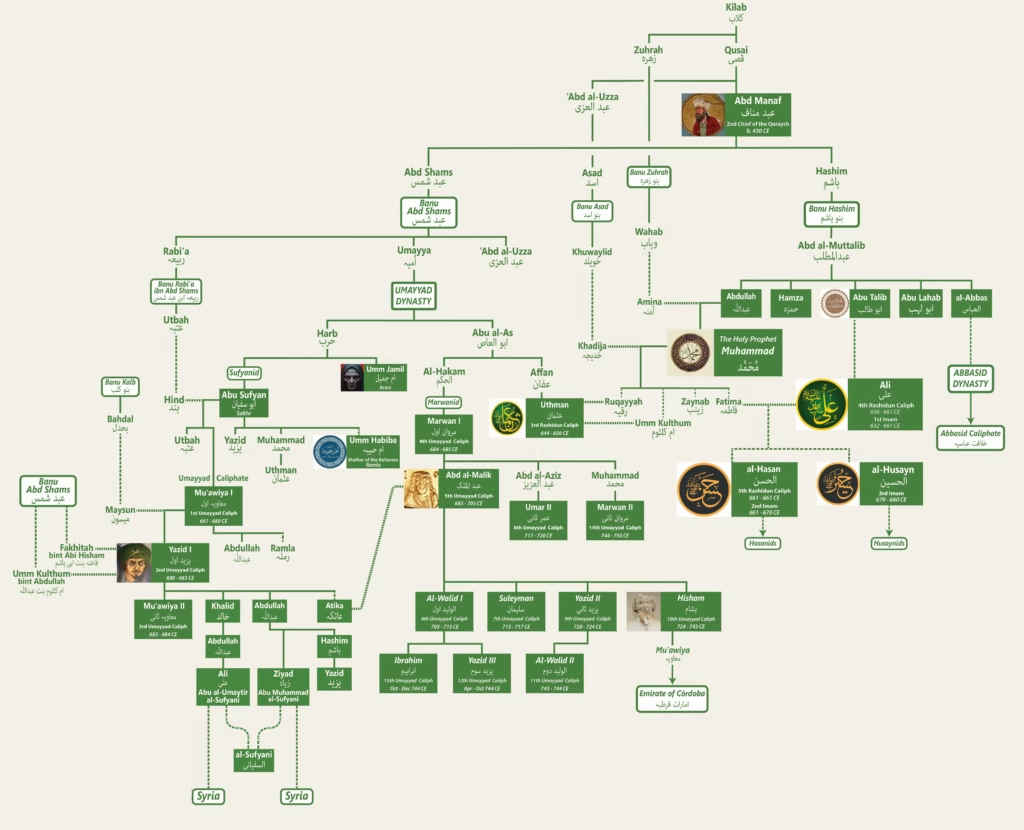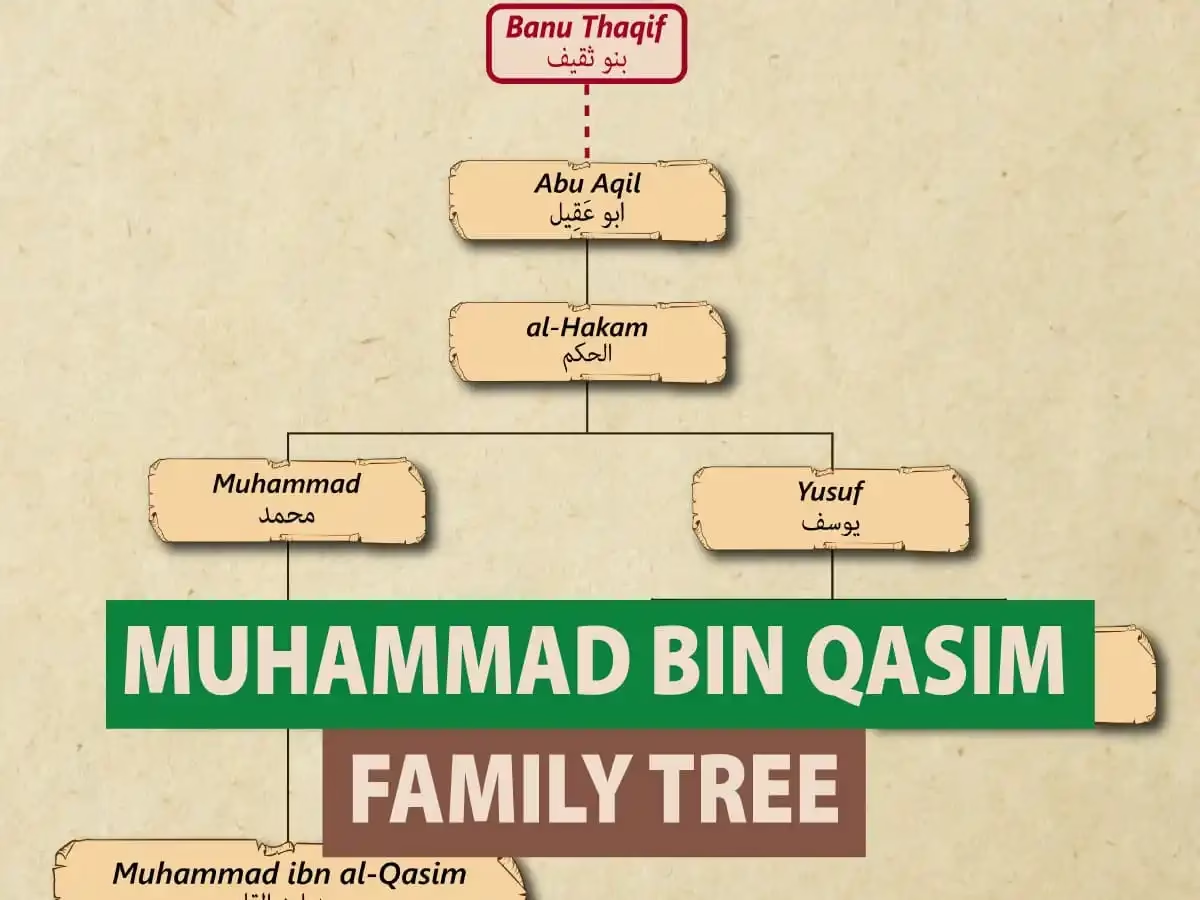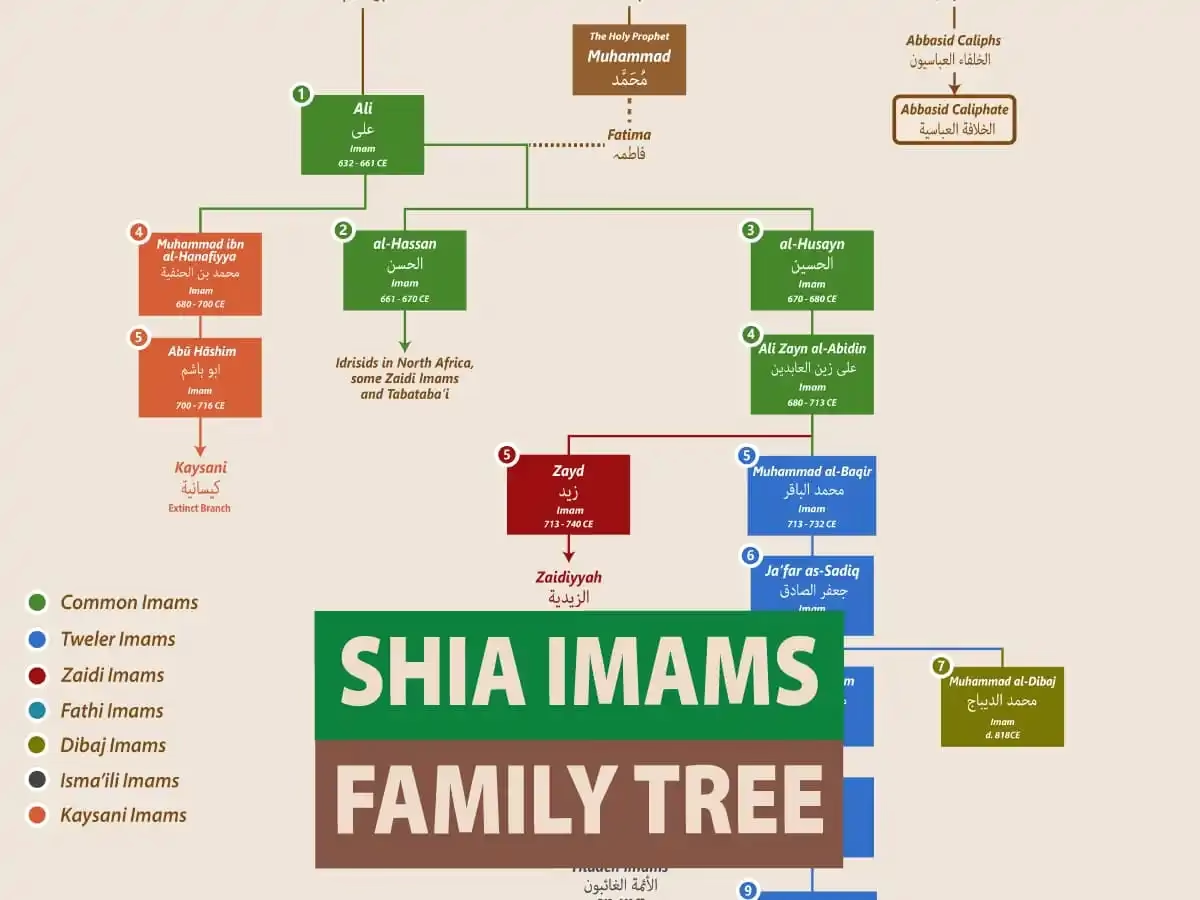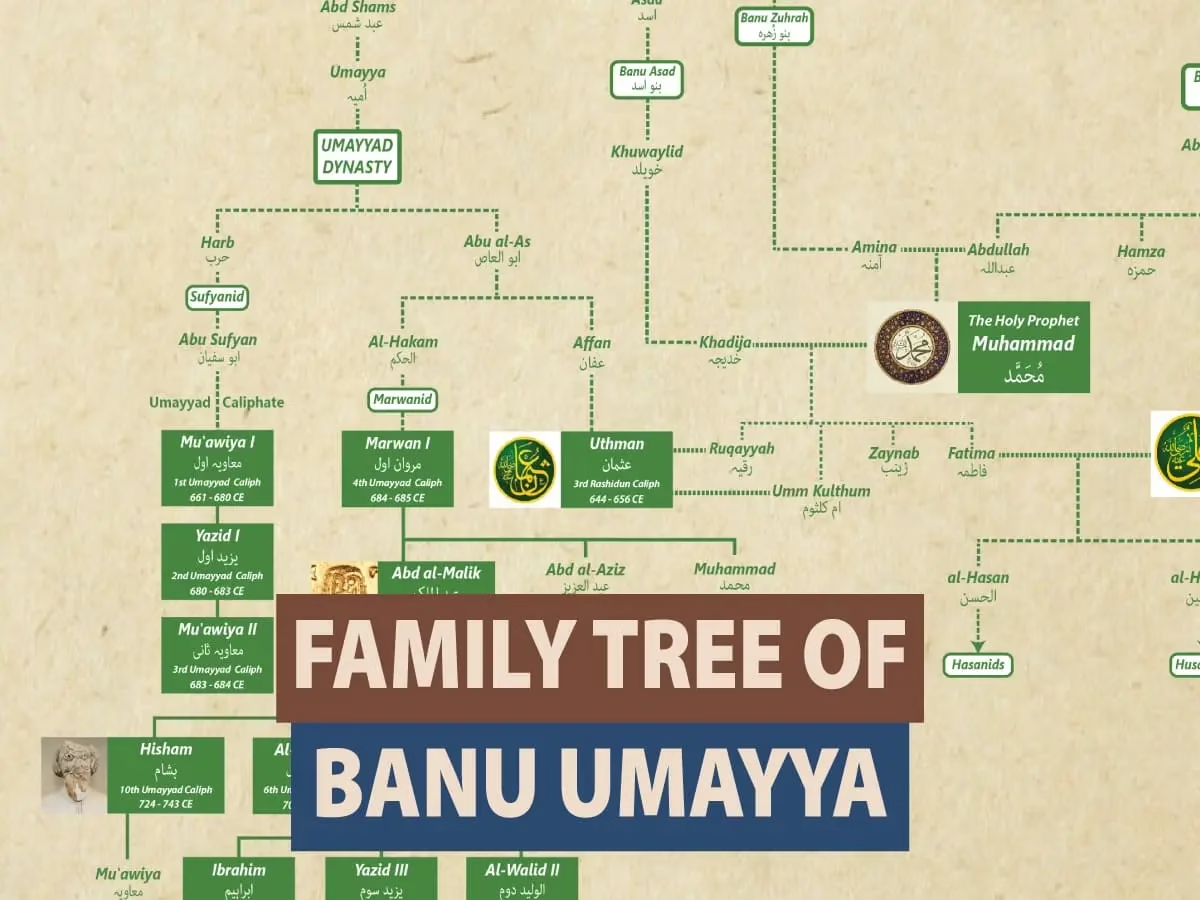Yazid ibn Muawiya is one of the most controversial and despised figures in Islamic history. His name is forever linked with the tragic Battle of Karbala and the martyrdom of Imam Hussain ibn Ali, the beloved grandson of Prophet Muhammad (PBUH). To understand Yazid’s background, one must trace his family tree deep into the powerful yet divisive Umayyad Dynasty, a clan descended from Banu Abd Shams—a sub-branch of the Quraysh tribe.

Origins: Banu Abd Shams vs. Banu Hashim
At the root of this lineage lies Abd Manaf ibn Qusay, a key ancestor of both Banu Umayyah and Banu Hashim. He had sons including Abd Shams and Hashim—the former being the progenitor of the Umayyad Dynasty and the latter the great-grandfather of the Prophet Muhammad.
This early family division laid the groundwork for a historic rivalry, which later escalated into political and religious conflict, particularly between Ali ibn Abi Talib’s family (Banu Hashim) and the Umayyads, represented by Muawiya ibn Abi Sufyan and later Yazid ibn Muawiya.
The Umayyad Lineage: From Harb to Yazid
Harb ibn Umayyah, son of Umayyah and grandson of Abd Shams, was a prominent chief of the Quraysh and father to Abu Sufyan ibn Harb. Abu Sufyan played a key role as an opponent of Islam in its early years, but later accepted Islam after the Conquest of Makkah.
Abu Sufyan’s son Muawiya I was appointed governor of Syria by Caliph Umar ibn al-Khattab. Following the murder of Caliph Uthman ibn Affan, Muawiya demanded justice, opposing Caliph Ali and sparking the First Muslim Civil War (Fitnah).
Muawiya’s rise culminated in the foundation of the Umayyad Caliphate in 661 CE, making him the first Umayyad Caliph. However, his decision to appoint his son Yazid as successor in 676 CE marked a major shift—the beginning of dynastic monarchy in Islam.
See Also: Banu Umayya and Banu Hashim Family Tree
Yazid ibn Muawiya
Yazid was born to Muawiya and Maysun bint Bahdal, a Christian noblewoman from the Kalb tribe. His nomination as heir was highly controversial and led to the Second Fitnah after Muawiya’s death.
Yazid’s demand for allegiance (bay’ah) from Imam Hussain was rejected, leading to the tragedy of Karbala, where Imam Hussain, his family, and companions were brutally martyred in 680 CE. This event became a turning point in Islamic history and permanently tarnished Yazid’s name.
Yazid’s Children and Succession
Yazid had three known children:
- Muawiya II – His eldest son, who succeeded him as caliph but ruled only briefly due to ill health. He had no children and condemned his father’s policies.
- Khalid ibn Yazid – Known for his interest in alchemy and Greek sciences. He was sidelined politically but later advised Caliph Abd al-Malik and married his daughter.
- Abdullah ibn Yazid – A skilled archer and warrior.
Yazid’s daughter, Atika, married Caliph Abd al-Malik ibn Marwan, and their son Yazid II ruled from 720–724 CE.
The al-Sufyani Legend and Yazid’s Descendants
Islamic eschatology speaks of a tyrant named “al-Sufyani”, said to emerge before the end of times and oppose the Mahdi. In Shia traditions, he is depicted as an anti-Messiah figure—traced to Yazid’s lineage.
Some scholars claim this myth developed during or shortly after the Umayyad period. Historical rebels in Syria even claimed to be the Sufyani.
Yazid’s descendants from Khalid and Abdullah are believed to have survived and integrated into Syrian society.
See Also: Imam Mahdi Family Tree



